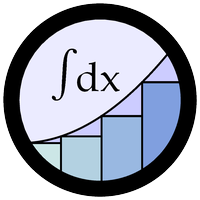Overview
Let's create a goblet using calculus! You will work in a team of three people to design a goblet that satisfies desired criteria. At the end of the semester we will print it out on the math department's 3D printer and you will get to hold your goblet in your hands!
Goblet Criteria
You will design a goblet that satisfies the following criteria:
- The goblet must be a solid of revolution created by revolving a piecewise-defined function.
- The goblet must hold 150–200 cm3 (cubic centimeters) of liquid.
- The height of the goblet must be no more than
10 cm20 cm. - The stem thickness must be at least 0.8 cm at its thinnest point.
- The base
radiusdiameter of the goblet must be at least 1/3 of the height of the goblet, so that it does not fall over.
Specifications
The final product of this project will consist of:
- A two-page writeup about your goblet.
- A Mathematica file with a 3D visualization of your goblet.
- An STL-file that is a 3D model of your goblet.
- A short "group dynamics paragraph". Include your interpretation of how each group member contributed to this project and whether they fulfilled their part of your agreed upon expectations.
- Include your group members' names, and a name for your goblet at the beginning.
- Discuss the piecewise-defined function.
Write down the explicit piecewise-defined function. Write a paragraph explaining why it is a continuous function, and how you went about constructing it.
- Verify that your goblet satisfies the criteria listed above.
You will need to explain in words why your goblet satisfies the criteria listed above, and supplementing your writing with hand calculations or computer calculations as necessary.
- Be formatted in a clear and organized manner.
The paragraphs will be written in correct English and be written in such a way that other students in Math 142 can understand your work. You should use course appropriate language such as "surface of revolution".
- Include your group members' names, and a name for your goblet at the beginning.
- Give a plot of the bounding functions.
Show the 2D plots of the inside and outside of the functions.
- Show the 3D visualization of your goblet.
Use the relevant functions to create a 3D model of your goblet.
- Use the correct Mathematica Commands to export your goblet to an STL file.
Timeline
- Form Project Groups by Monday, November 13:
By the end of class on Monday, November 13, you should have chosen your groupmates to form a group of three. Make sure to exchange phone numbers and determine times during the week when you are able to work on this project outside of class. Find Mathematica in a computer lab on campus or register for and download Mathematica to your home computer.
- Prepare Project Ideas for Wednesday, November 15:
For this day, you and your classmates will work to have a firm understanding of the project requirements. Make sure to spend time outside of class researching the concepts that you will need for your project. Start a Mathematica notebook where you play around with some of these concepts. Bring it to class and I will brainstorm with you about your project.
- Turn in Mathematica and STL files on Monday, December 4:
By this date, you are expected to be have completed the virtual design of your goblet. You will be expected to turn in your final Mathematica file and your STL file so that we can 3D print your goblet by the following week.
- Final Report and Presentation on Monday, December 11:
On this day, your two-page writeup is due, as is your group dynamics paragraph. Also, you will present your goblet to the class. We will vote on which one the class likes the best!
Printing and Critiquing
3D printing using Fused Deposition Modeling is a very slow process. For this reason, I will only be able to print out one copy of your goblet per group. Once the goblets are all printed, we will bring them to class and display them all for everyone to see. The class will vote on their favorite goblet.
Grading
This project contributes to three of our class's standards this semester. You will be given a score as follows.
- Standard M5: Project Management. I will assess the extent to which that you are able to produce the deliverables of this project, on time. I will determine if you are able to produce a well-written project summary. I will assess the extent to which you have worked together as a group by reading the group dynamics paragraph you submit.
- Standard M6: Computer Skills. I will assess the extent to which your submitted Mathematica file and STL file each satisfies the requirements laid out above.
- Standard A4: Disk/Washer Method. By reading the writeup, I will assess the extent to which you have set up the integrals and correctly calculated the integrals necessary for computing the volume of the goblet. I will assess the extent to which your goblet satisfies the desired volume and thickness requirements. You are expected to explain your ideas carefully in your writeup in order to show me that you understand the concept of the Disk/Washer Method.
